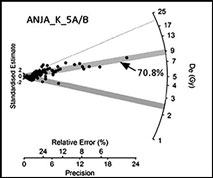Crossref Citations
This article has been cited by the following publications. This list is generated based on data provided by
Crossref.
Mitchell, Peter
2020.
Debating Madagascar: A reply to Hansford et al.’s response.
The Journal of Island and Coastal Archaeology,
Vol. 15,
Issue. 4,
p.
603.
Salmona, Jordi
Olofsson, Jill K
Hong-Wa, Cynthia
Razanatsoa, Jacqueline
Rakotonasolo, Franck
Ralimanana, Hélène
Randriamboavonjy, Tianjanahary
Suescun, Uxue
Vorontsova, Maria S
and
Besnard, Guillaume
2020.
Late Miocene origin and recent population collapse of the Malagasy savanna olive tree (Noronhia lowryi).
Biological Journal of the Linnean Society,
Vol. 129,
Issue. 1,
p.
227.
Serva, Maurizio
Pasquini, Michele
and
Scalas, Enrico
2020.
Dialects of Madagascar.
PLOS ONE,
Vol. 15,
Issue. 10,
p.
e0240170.
Reinhardt, Antonia L.
Kasper, Thomas
Lochner, Maximilian
Bliedtner, Marcel
Krahn, Kim J.
Haberzettl, Torsten
Shumilovskikh, Lyudmila
Rahobisoa, Jean-Jacques
Zech, Roland
Favier, Charly
Behling, Hermann
Bremond, Laurent
Daut, Gerhard
and
Montade, Vincent
2022.
Rain Forest Fragmentation and Environmental Dynamics on Nosy Be Island (NW Madagascar) at 1300 cal BP Is Attributable to Intensified Human Impact.
Frontiers in Ecology and Evolution,
Vol. 9,
Issue. ,
Schreurs, Guido
Allegro, Tristan
Rouvinez, Margaux
Radimilahy, Chantal
Raharinoro, Judith
Fanny Sabe, Nelas
Rakotoarisoa, Jean-Aimé
Rakotomavo, Lahatra
Rakotondrazafy, Ny Antso
Randrianarivelo, Njara
and
Szidat, Sönke
2024.
Teniky: enigmatic architecture at an archaeological site in southern Madagascar.
Azania: Archaeological Research in Africa,
p.
1.
Rasolondrainy, Tanambelo
2024.
Encyclopedia of Archaeology (Second Edition).
p.
116.
